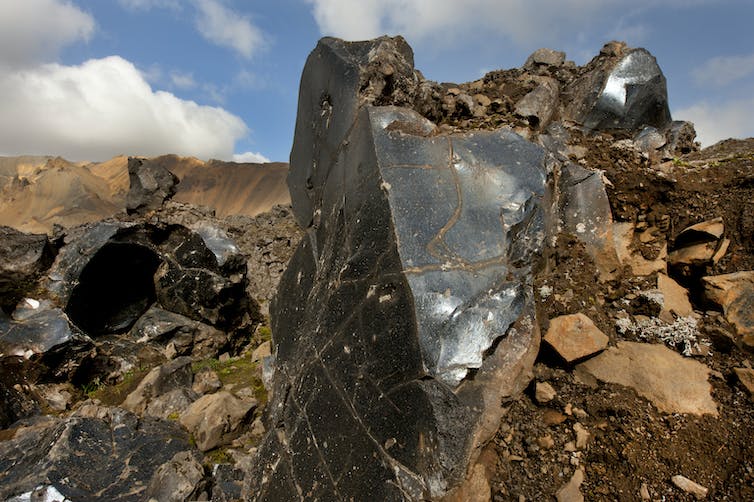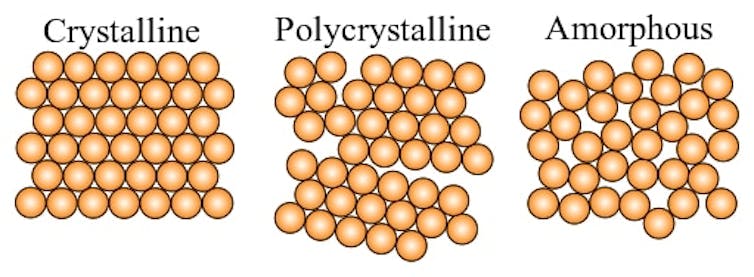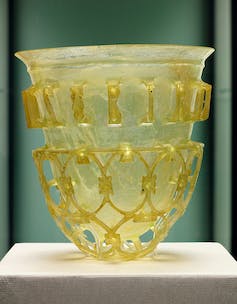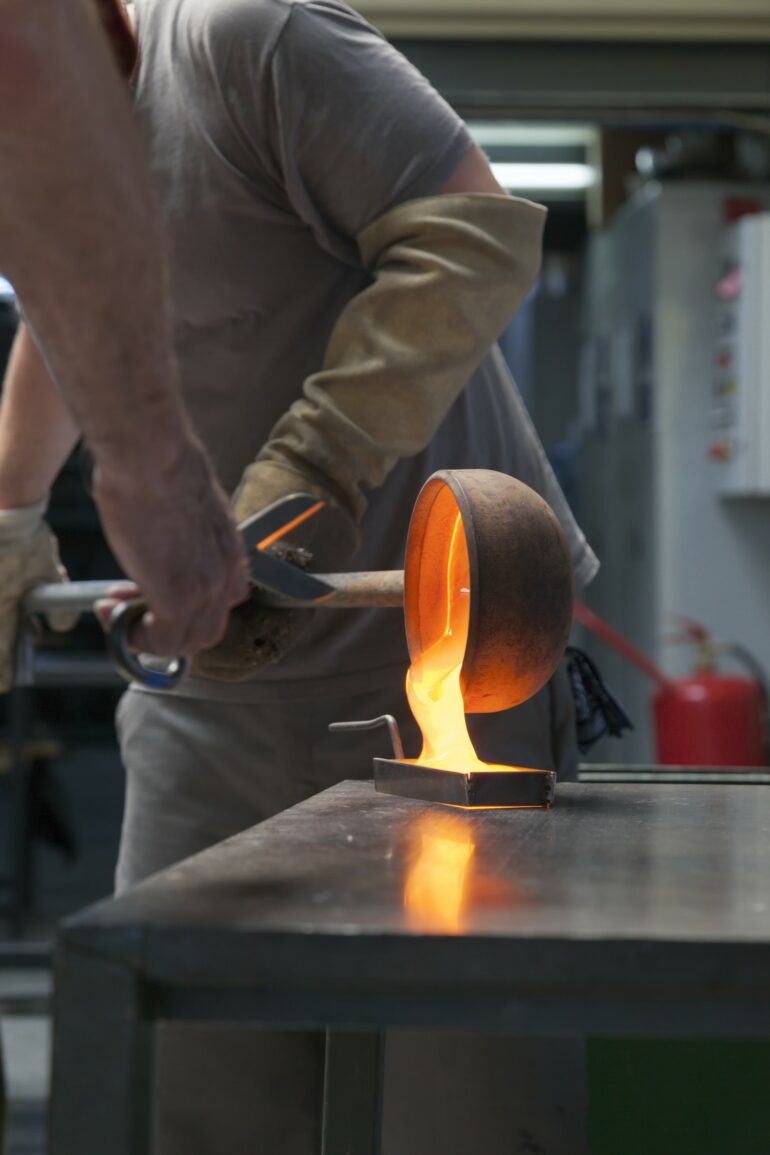Glass is a material of many faces: It is both ancient and modern, strong yet delicate, and able to adopt almost any shape or color. These properties of glass are why people use it to make everything from smartphone screens and fiber-optic cables to vials that hold vaccines.
Humankind has been using glass in some fashion for millennia, and researchers are still finding new uses for it today. It’s not uncommon to hear the oft-repeated factoid that glass is actually a liquid, not a solid. But the reality is much more interesting – glass does not fit neatly into either of those categories and is in many ways a state of matter all its own. As two materials scientists who study glass, we are constantly trying to improve our understanding of this unique material and discover new ways to use glass in the future.

Obsidian is a naturally formed glass.
Layne Kennedy/Corbis Documentary via Getty Images
What is glass?
The best way to understand glass is to understand how it is made.
The first step to make glass requires heating up a mixture of minerals – often soda ash, limestone and quartz sand – until they melt into a liquid at around 2,700 degrees Fahrenheit (1,480 Celsius). In this state, the minerals are freely flowing in the liquid and move in a disordered way. If this liquid cools down fast enough, instead of solidifying into an organized, crystalline structure like most solids, the mixture solidifies while maintaining the disordered structure. It is the atomically disordered structure that defines glass.

When molten glass cools, it freezes the disordered, amorphous structure it had as a liquid.
Cdang/Wikimedia Commons, CC BY-SA
On short timescales, glass behaves much like a solid. But the liquidlike structure of glass means that over a long enough period of time, glass undergoes a process called relaxation. Relaxation is a continuous but extremely slow process where the atoms in a piece of glass will slowly rearrange themselves into a more stable structure. Over 1 billion years, a typical piece of glass will change shape by less than 1 nanometer – about 1/70,000 the diameter of human hair. Due to the slow rate of change, the myth that old windows are thicker at the bottom due to centuries of gravity pulling on the slowly flowing glass is not true.
Colloquially, the word glass often refers to a hard, brittle, transparent substance made of fused sand, soda and lime. Yet there are many types of glass that are not transparent, and glass can be made from any combination of elements as long as the liquid mixture can be cooled fast enough to avoid crystallization.
From the Stone Age to today

Humans have been creating tools with glass for thousands of years, like this Roman cup from the fourth century.
MatthiasKabel/Wikimedia Commons, CC BY-SA
Humans have been using glass for more than 4,000 years, with some of the…
